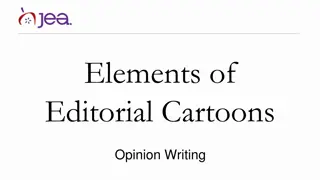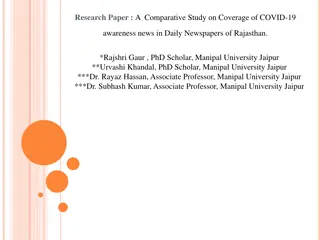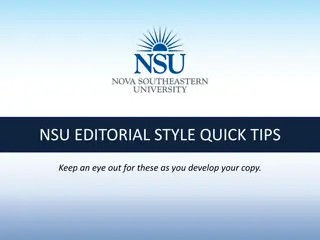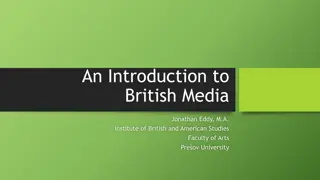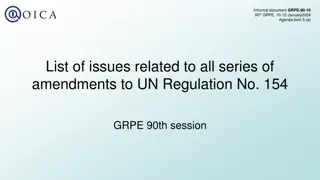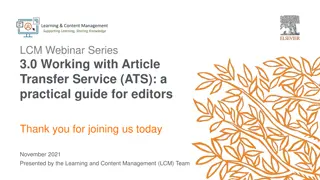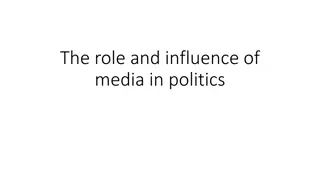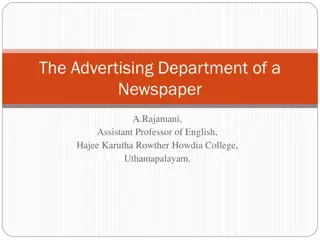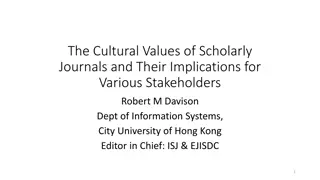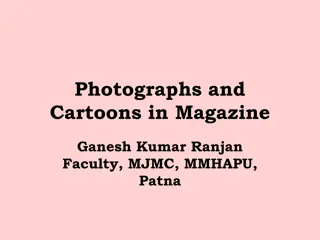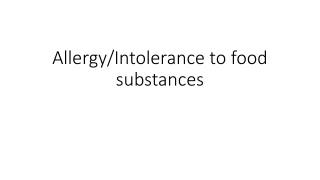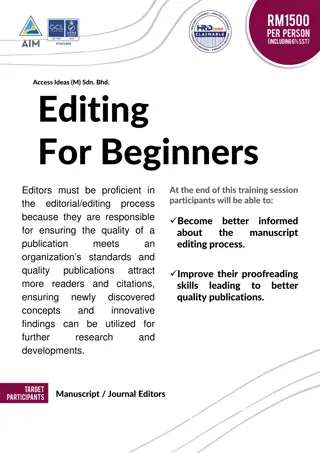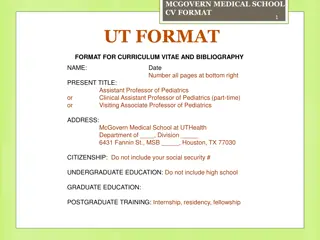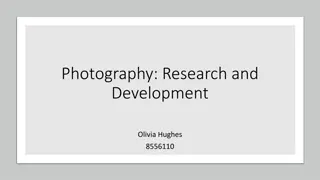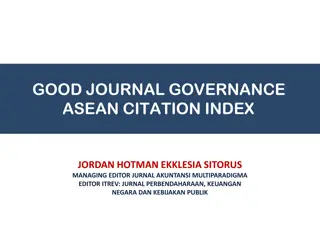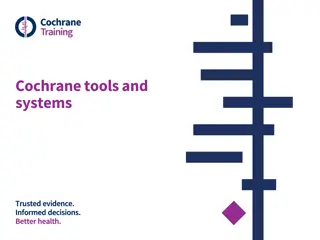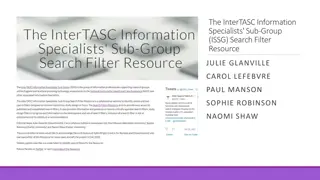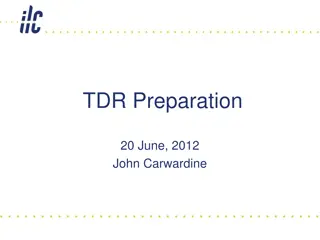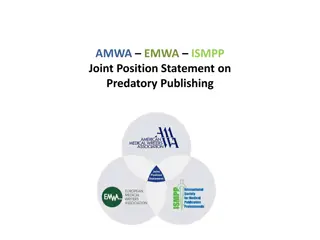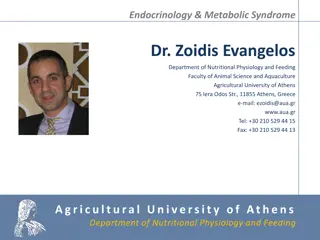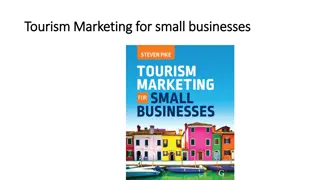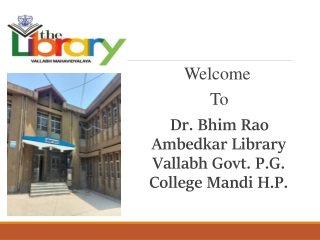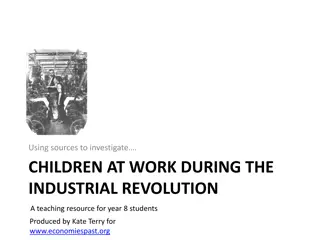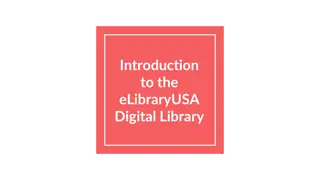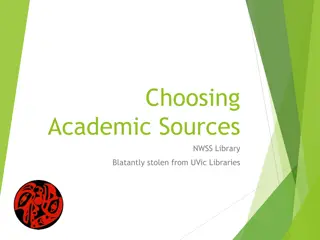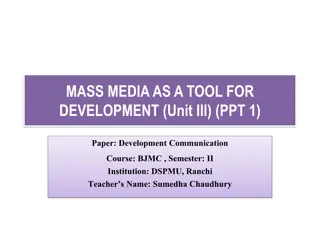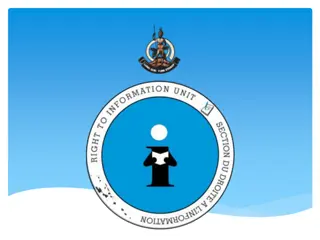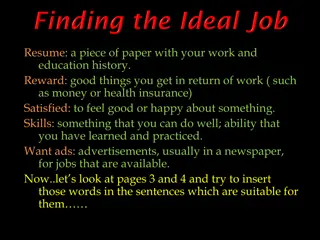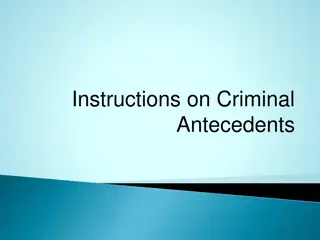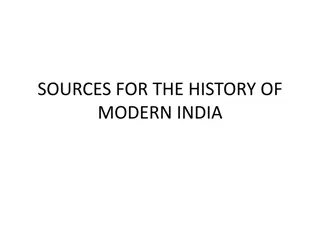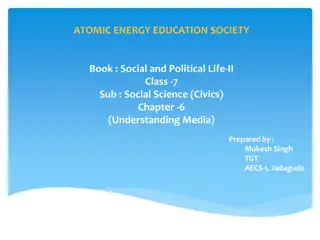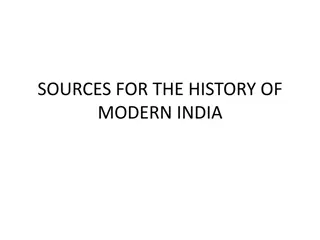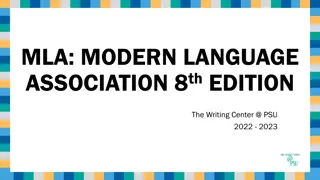The Significance of Editorial in Newspapers
The editorial page in a newspaper serves as a platform for expressing opinions that reflect the publication's stance on various issues. It plays a crucial role in providing analysis, interpretation, and guidance to readers, encouraging them to consider perspectives that prioritize the public good over partisan interests. Editorials are usually penned by senior editorial staff or the publisher, aiming to inform, influence, and engage readers in thoughtful discourse.
Download Presentation

Please find below an Image/Link to download the presentation.
The content on the website is provided AS IS for your information and personal use only. It may not be sold, licensed, or shared on other websites without obtaining consent from the author. Download presentation by click this link. If you encounter any issues during the download, it is possible that the publisher has removed the file from their server.
E N D
Presentation Transcript
The editorial page of any newspaper is the VOICE of the editorial staff and the readers. It expresses the opinion of whatever the management of the publication feels in relation to the present occasion.
To explain and interpret the news, to put it in on its proper perspective, to analyze it, to draw conclusions from that analysis and To persuade the readers to follow a course of action that the newspaper believes is for the public good regardless of party interests involved
Explaining the news Filling the background Forecasting the future Passing moral judgment
An editorial is an article in a newspaper or magazine (or television or radio) that expresses the editor's personal bias. An editorial is an opinion piece written by the senior editorial staff or publisher of a newspaper or magazine. Editorials are typically published on a special page dedicated to them, called the editorial page, which often also features letters to the editor from members of the public
The page opposite this page is called the op-ed page and frequently contains opinion pieces by writers not directly affiliated with the publication in magazines. In most English language press, this is done only rarely and on topics considered especially important. An Editorial give the reader some impression of the political affiliation of the writer.
The editorial page usually includes editorials, letters to the editor and an editorial cartoon or a lite hearted story. Editorials are unsigned because they do not represent the sole opinion of the writer, but the board's, and thus the newspaper's, position on an issue of public import. The Tribune publishes two editorials a day in the left hand column of the editorial page under the heading of Our View in the print edition. Online, they appear in the Editorials sub- section of the Opinion page.
The seven-eight member board, headed by the publisher and the leader writer, which decides what issues the newspaper will offer an opinion on and what that opinion will be. A publisher is the chief executive officer of a newspaper responsible for all of its operations, including the news and editorial sections. The editorial board's day-to-day operation is supervised by the editorial and opinion editor on behalf of the publisher.
The board also includes three editorial writers, the Public Forum editor and the editorial cartoonist.
Any member of the editorial board who researches and writes the editorials that represent the newspaper's position on a host of issues. The Tribune has three full-time editorial writers, including the deputy editorial-page editor. The editorial-page editor and, sometimes, the Public Forum editor, also write editorials.
The person appointed by the publisher to take responsibility for the newspaper's editorial pages and to supervise the editorial board.
During the week and on Saturdays, the page opposite the editorial page that usually contains a pair of nationally syndicated columns. The Sunday Opinion section contains several pages of op-eds written by local and national writers.
Brief opinions written and submitted to the newspaper by readers. They usually address timely issues and are accompanied by the writer's name and home town. They are published on the editorial page beneath the editorial cartoon in the print edition, except on Sundays when the letters appear on the second page of the Opinion section in print.
Online, the letters are in the Public Forum sub- section of the Opinion page. The Tribune's letters to the editor appear under the heading of The Public Forum.
A drawing, often including a caption, that appears on the editorial page and expresses the opinion of the cartoonist alone. The Tribune's in-house cartoonist is Pat Bagley; the paper also buys and publishes syndicated cartoons drawn by artists who are not Tribune employees.
An opinion piece that expresses the writer's own view and carries his or her name and often a picture. Many of these columns are written by nationally syndicated writers such as Rajdeep Sardesai, Barkha Dutt, Thomas Friedman and Cal Thomas and are purchased by the newspaper on contract.
Some columns are written and signed by individual members of the editorial board and represent the writer's opinion alone. Three local columnists appear regularly in the Sunday Opinion section: They are Barb Guy, John Yewell and Paul Rolly. Rolly, a Tribune employee, also writes a regular column for the cover of the main local news section.
An opinion written by someone who does not work for the newspaper but has some experience and/or expertise in a subject. Sometimes these are solicited by the newspaper; others are not.
Informative Informative are those which just give information, review,or announce certain facts or events. Example: The Need for Population Education The Need for Population Education Poverty, high cost of living, school crisis, lack of job opportunities confront common people. Millions of children are victims of under-nourishment and deficiency diseases that shorten their life and harm their mental development. Due to the failure of parents to send all their children to school, illiteracy rates are high and are still increasing. Many of us have these problems. But very few are aware that excessive population growth is responsible for these pressures as well as for the lowering of the quality of standards.The inclusion of Population Education in the school curriculum is then the answer to the need of the younger crop who are bound to face the reality of parenthood in the near future. Basic cultural values concerning the individual, his family, the society, and the nation can be effectively brought in to the extent desired through population education. human resources and development, especially as regards educational Finally, creating an awareness about population is a challenge that Philippine education has to face right now. For time is against us. And time-wasting is resource-wasting. This idea will help in adopting a small family norm and will insure good health for the mother, better welfare of the children, economic stability of the family, and bright future for the continuing generations
Interpretative idea Interpretative those which explain or bring out the significance of an event, situation, or Example: own benefit and not to accommodate someone else. As such we have to relate it to our own aims or ambitions in life.We should not think of study merely in terms of quizzes, recitations, homework, term papers and reports. Putting a valuation upon it in terms of five, ten or twenty years from now will give it more meaning to us. Study Attitude Attitude Towards Towards Study We are in school because we want to learn. Our study is for our The facts, ideas, and principles we acquire now are the stuff with which we will do our thinking in the future.Let s remember, too, that how we learn is sometimes more important than what we learn. An efficient working method will serve us throughout life, but many of the things we learn will just be forgotten. Being systematic about study will do a lot. Habit then comes to our aid. With just a few weeks to go before classes end, we hope these few reminders will result to a better attitude towards study.
Example: The Way of Most Desks The Way of Most Desks Student-judges who inspected every room in connection with OperationCleanliness found out that most of the desks had scratches and/or ink spots. One can hardly write on them without a thick sheet of paper for a pad. students to sit on. Students really take advantage of them. They sit on top of the desks and place their muddy shoes on the seats instead. available for the students use, will they end up the way most desks go? Outside the classrooms, some desks are placed for the When the 220 new desks for Pasig Line will be made
Example: New Year Thoughts New Year Thoughts New year is the finale of the Yuletide Season which is accompanied by the spirit of joy and goodwill that can only be understood, never fully explained. It is enough to feel the spirit of it - that which illumines our souls the spirit that transforms into reality that Christmas message Peace on earth to men of goodwill. choicest gifts of their kingdoms and since that time, the Season has been the time to give, to receive. And man has since felt what pleasure it is to give and what joy to receive. New Year is an occasion and reason for showing the fine sentiments that we feel. It is the time for renewal of friendships, for making bonds of kinship stronger and firmer. New Year's time is the most fitting time to bury all grudges. Between friends, neighbors, classmates, relatives, co-workers, it is the time to forget all wrongs suffered and all injuries received, to let bygones be bygones. This constitutes the real essence of the Season Love, the greatest and finest of man s sentiments When Jesus was sent to redeem mankind, the three kings offered Him the
Example: Commitment Commitment Determination, self-confidence and the desire to seek the truth guided our struggle to restore the campus paper.The Josephine Journal is our victory a product of the concerted effort of the CAS-Wall Journal (CWJ) staffers and the whole CAS studentry amidst tremendous hardships we encountered along the way. towards since last year and a paper we have been longing for since the CAS- JO Chronicle ceased publication. We are hoping that this paper will serve as our voice in upholding the students interests which shall be guided by the principles of truth, justice, freedom and democracy. opinions and ideas. Together we will uphold the freedom of speech in strengthening the unity of the studentry in responding to the call of our times. Together we will protect the rights we have acquired through our struggle.This is the commitment of the Josephine Journal. We rejoice with the studentry in having a paper we have been working Together, we have won a venue to voice out our grievances, victories, - Josephine Journal St. Joseph s College
Example: having all their classes in a single room is rather like their first day in a big city crowded with different kinds of people. There is confusion and a bewildered cry never heard of before. On our own first day in high school, we were elbowed about from one room to another, usually losing our way and arriving late. First Day in School First Day in School The first day in high school for pupils who have been used to Then we were told that the section in which we had finally found our way was too large, that we must find another room on a different floor.When we got on the wrong stairway, the older pupils laughed. When bells rang for classes to begin, we would stand still; and when they rang for dismissal, we would sit still. By the end of the first day we had decided that higher learning was no good and we might as well quit. Yet, as you see, we are still here; so we must have changed our minds.
Example: Dr. Estrada Dr. Estrada Dr. Januario Estrada, 78, considered the dean of Filipino surgeons, died yesterday,leaving behind an outstanding record of service in Philippine Medicine. with the Philippine General Hospital and the University of the Philippines College of Medicine throughout his career. Until his death, he remained an active member of various medical organizations, the same groups which he at one time or another helped organize or headed as president. his having been chosen the most outstanding medical alumnus of the state university in 1955. During his lifetime, he also authored scientific papers that brought new light to the practice of medicine and, more particularly, surgery. His death is a heavy loss to the medical profession. Since obtaining his medical degree in 1918, Dr. Estrada had been For his services, Dr. Estrada received many awards, topped off by
Example: Love is Love is Love is looking up to find comfort in mother s smile.It s running and kissing father s hands to deserve his package. It s thinking and dreaming about a loved one day and night. It s doing things to please the other. It s answering and writing love letters on perfumed paper. It s crying and brooding over careless words. It s rejoicing and walking on clouds on hearing sweet things. It s loving happily day by day. Why Wait? Why Wait? If we suddenly discovered, the late Christopher Morley once observed, that we had only five minutes left to say all we wanted to say, every telephone booth would be occupied by people trying to call up other people to stammer that they loved them. Why wait until the last five minutes?
Choose a topic. the issues, events, faces appearing in the news but try as much as possible to make the editorial acquire the following values: Choose a topic. You can choose to tackle any of Current and timely Substantive Offers insight Free of conflict of interest Current and timely Substantive Offers insight Free of conflict of interest
Obtain background material and information your topic. Observe, read, interview. Identify your purpose and audience inform? Or do you want to interpret, criticize, suggest reforms, urge readers to action? Explain or interpret a sensitive or controversial subject Criticize situations Praise job well done Persuade solution and not the problem Obtain background material and information about Identify your purpose and audience will it merely Explain or interpret the way the newspaper covered Criticize constructively actions, decisions or Praise to commend people or organizations for a Persuade to get readers immediately see the
Brainstorm Ideas Finding ideas Reading, journal writing Organize Information facts logically before writing the piece. Choosing Ordering Brainstorm Ideas Finding ideas: free writing, clustering Organize Information briefly outline your Choosing details Ordering details
Editorials usually have three parts: The beginning The body and The conclusion



